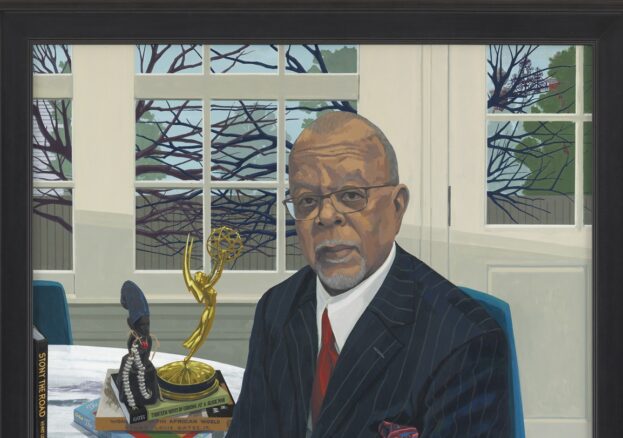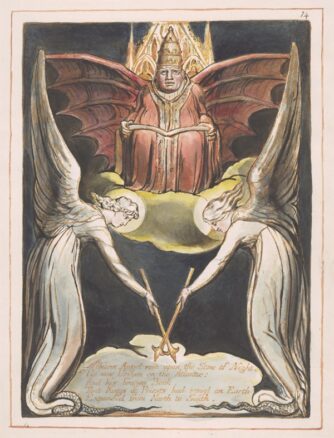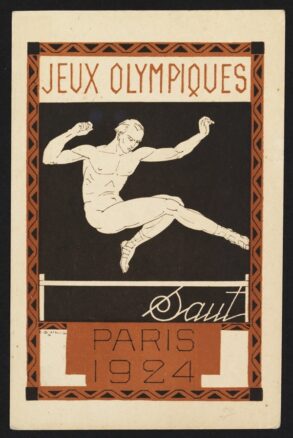
From artist William Blake’s connections to European ideologies and 1924 Cambridge Olympians in modernist Paris, to New York-based artist Glenn Ligon’s meditations on Cambridge collections and the National Gallery’s famous Botticelli leaving London for the first time since its acquisition.
William Blake’s Universe23 (February – 19 May 2024)
This major exhibition is the first to consider William Blake’s position in a constellation of European artists and writers striving for renewed spirituality in art and life. Responding to the u
pheavals of revolution and war in Europe and the Americas, William Blake (1757- 1827) produced an astonishing body of work that combined criticism of the contemporary world with his vision for universal redemption. The exhibition explores Blake’s unexpected yet important links with European figures including the German Romantic artists Philipp Otto Runge (1777-1820) and Caspar David Friedrich (1774-1840).
Despite never meeting Blake or knowing his work, these artists shared a powerful sense of individuality and a belief in the power of art to regenerate a fallen society. Together with the largest display of the Fitzwilliam’s collection of Blake’s works, the exhibition features many significant loans by artists including Runge and Friedrich from the Hamburger Kunsthalle, Germany, which will be seen in the UK for the first time.
Curators David Bindman and Esther Chadwick said: ‘This is the first exhibition to show William Blake not as an isolated figure but as part of European-wide attempts to find a new spirituality in face of the revolutions and wars of his time. We are excited to be able to shed new light on Blake by placing his works in dialogue with wider trends and themes in European art of the Romantic period, including transformations of classical tradition, fascination with Christian mysticism, belief in the coming apocalypse, spiritual regeneration and national revival’.
Galleries 1-5 Redisplay (15 March 2024)
The Fitzwilliam Museum’s main painting galleries will reopen in their entirety for the first time in four years following a major refurbishment and redisplay project. The new displays in galleries 1- 5 present paintings dating from the 1600s to the present day and from around the world, reflecting the growing diversity of the Fitzwilliam’s collection and areas of research.
Through the themes of interiors, migration and movement, landscape, representations of women and portraiture, the displays bring together much-loved and iconic paintings, new discoveries and recent acquisitions in imaginative and unexpected ways. From works by artists including Dante Gabriel Rossetti, Henri Matisse, Gwen John, Kerry James Marshall, Joy Labinjo and Jake Grewal, the displays offer different perspectives and a new lens through which to both consider our pasts and inspire our futures.
 Luke Syson, Director of the Fitzwilliam Museum said: ‘The Fitzwilliam has a crucial role in telling a more expansive and inclusive story of art that resonates with us today. This redisplay, juxtaposing historic and contemporary works, offers a more complex narrative that links past and present and is made possible through the scope of our collections and some exceptional new acquisitions. Our most famous works of art now take their place alongside more unexpected pieces in a rich array that leaves space for a range of responses and asks us to think anew’.
Luke Syson, Director of the Fitzwilliam Museum said: ‘The Fitzwilliam has a crucial role in telling a more expansive and inclusive story of art that resonates with us today. This redisplay, juxtaposing historic and contemporary works, offers a more complex narrative that links past and present and is made possible through the scope of our collections and some exceptional new acquisitions. Our most famous works of art now take their place alongside more unexpected pieces in a rich array that leaves space for a range of responses and asks us to think anew’.
National Treasures: Botticelli in Cambridge (10 May – 10 September 2024)
Venus and Mars (c. 1485) by Sandro Botticelli (c. 1445 –1510) is leaving the National Gallery for the first time since its acquisition in 1874 to go on display at the Fitzwilliam Museum. The unprecedented loan is one of 12 of the nation’s most iconic and well-loved paintings from the National Gallery’s collection going on display at venues across the UK in celebration of their 200th birthday. The painting will be shown in dialogue with other renaissance works from the Fitzwilliam’s collection in a display exploring ideas of gender, power and the body in art.
Paris 1924: Sport, Art and the Body (19 July – 3 November 2024)
Paris 1924: Sport, Art and the Body tells the story of sport’s breakthrough moment in a multicultural city defined by art, jazz and fashion. The fusion of modern Parisian cultural style with the Olympics’ classical inheritance gave the event a striking visual impact.
As the Olympics return to Paris in 2024, the 1924 Games remain as fresh and relevant to the world as they were at the time. Bringing together painting, sculpture, fashion, film and photography, Paris 1924: Sport, Art and the Body explores the intersection of art, sporting endeavour and attitudes to body image, nationalism, race, class, gender and celebrity at a pivotal moment in history.
The exhibition also showcases the links between the 1924 Games and Cambridge University. Of the 35 medals secured by the British team that summer, 11 were won by Cambridge students, including sprinter Harold Abrahams, who was later immortalised in the film ‘Chariots of Fire’.
Curators Caroline Vout, Professor of Classics, University of Cambridge and Professor Chris Young, Head of the School of Arts and Humanities University of Cambridge said: ‘The exhibition explores the look and feel of Paris 1924 as trailblazing and traditional, local and global, classical and contemporary. It brings together painting, sculpture, film, fashion, photography, posters and letters. It is a story that impacts on gender, class, race, representation, celebrity, science, art – a story of sport as culture’.
Glenn Ligon: All Over The Place (20 September 2024 – 2 March 2025)
Widely considered one of the most important artists working today, Glenn Ligon (b. 1960) presents a major exhibition including gallery interventions at the Fitzwilliam Museum. Ligon’s art investigates the social, linguistic and political constructions of race, gender and sexuality as a sustained meditation on issues of the presence of the past in the present and the representation of self in relation to culture and history.

He is best known for his landmark text-based paintings, made since the late 1980s, which draw on the influential writings and speech of 20th-century historical and cultural figures including James Baldwin, Zora Neale Hurston and Gertrude Stein.
The exhibition features several of these works, as well as his large-scale neon Waiting for the Barbarians (2021), which will be installed in the Museum’s grade-I listed portico. Two dedicated galleries of Ligon’s works will be linked by interventions threaded throughout the Museum’s permanent collection galleries in which the artist has selected artworks and objects, including experimental drypoints by Frank Auerbach, heavily annotated medieval manuscripts and eighteenth-century Chinese imitation Wedgwood vases, to highlight how objects tell stories and make meaning through their aesthetic qualities.
Glenn Ligon said: ‘My exhibition is a thread that winds its way through the Fitzwilliam, loose in some places, taut in others, which the visitor can choose to follow or encounter serendipitously. In some cases, I juxtapose my works with pieces from its expansive collection in other cases I have chosen to amplify themes of empire, resource extraction and cultural hybridity by adding text commentary to existing museum displays’.
